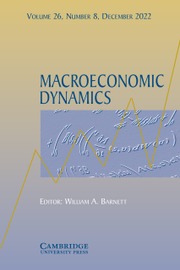No CrossRef data available.
Article contents
Environmental regulation and foreign direct investments: evidence from a new measure of environmental stringency
Published online by Cambridge University Press: 29 August 2025
Abstract
This paper investigates the impact of environmental regulations on inward foreign direct investment (FDI) using a novel index that distinguishes between the implementation and enforcement of environmental policy across 111 countries from 2001 to 2018. Leveraging bilateral FDI data and a structural gravity model, we find robust evidence of a Pollution Haven Effect: weaker environmental regulations in host countries are associated with higher levels of inward FDI. The effect is more pronounced in emerging markets and in environments with higher corruption. Importantly, we show that FDI responds more strongly to policy implementation, capturing formal regulatory commitment, than to enforcement, measured as deviations between predicted and actual emissions. In addition, bilateral FDI patterns are shaped by the environmental stringency gap between source and host countries, consistent with regulatory arbitrage behavior.
Information
- Type
- Articles
- Information
- Copyright
- © The Author(s), 2025. Published by Cambridge University Press

